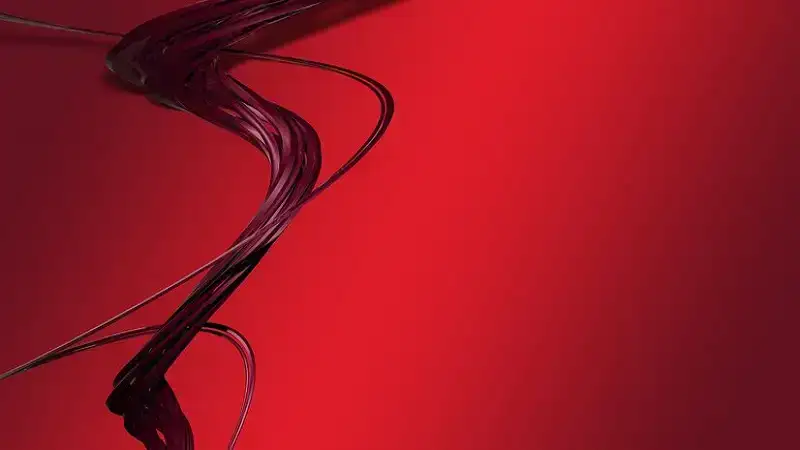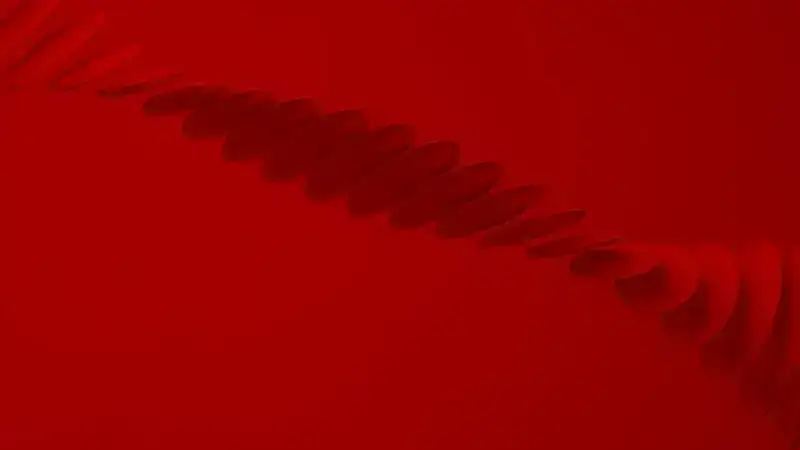The red aesthetic is intense, bold, and dynamic. From deep burgundies to vibrant crimsons, red demands attention and evokes powerful emotions. This article takes a closer look at the aesthetic of red: its symbolism, its history in art and culture, and how you can incorporate red into your life, whether through fashion, interior design, or digital platforms.
What Does Aesthetic Mean?
The Origins of Aesthetic
The concept of “aesthetic” traces back to ancient Greece, where it originated from the word “aisthētikos,” which means perception through the senses. Originally, aesthetics was concerned with the nature of beauty and how individuals perceive it through art and nature. Over the centuries, this idea evolved, and today, aesthetics refers not only to beauty but also to style, form, and emotional expression. Aesthetic movements throughout history have shaped how we view art, design, and even everyday life.
In modern times, aesthetics are more than just about visual appeal; they serve as a form of self-expression. The “red” aesthetic is one such form that speaks to those who are bold, passionate, and unafraid to make a statement.
The Power of Color in Aesthetic Movements
Why Colors Matter in Aesthetics
Color is one of the most important elements in any aesthetic. It sets the tone and mood, influencing how people perceive a particular space, outfit, or image. Different colors evoke different feelings, from calmness and serenity to excitement and passion. In the world of aesthetics, color becomes a tool for creating emotional depth and visual intrigue.
Among all the colors, red is the most powerful and striking. It’s a color that has been used to convey a range of emotions, from love and desire to anger and intensity. Red stands out, it catches the eye, and it immediately draws attention.
The Aesthetic of Red
Symbolism of Red
The color red has always been a symbol of power, passion, and action. It’s associated with love, warmth, and energy, but also with danger, aggression, and warning. This duality makes red a fascinating color for aesthetic use.
In different cultures, red holds a variety of meanings. In Chinese culture, red is the color of luck and prosperity, often worn during celebrations and important events. Ins Western cultures, red can symbolize love and romance, especially during Valentine’s Day, where hearts and flowers are often depicted in red. It’s also the color of revolution and resistance, used by political movements throughout history to symbolize change and defiance.
The Psychological Impact of Red
From a psychological perspective, red is a color that stimulates the senses. Studies have shown that red can raise heart rates and increase feelings of excitement or urgency. This is why red is often used in advertising and marketing to grab attention. In aesthetic choices, red creates a sense of energy and movement. When used in spaces or fashion, it evokes confidence and power, making it the perfect color for those who want to make a statement.
Historical Importance of Red in Art and Culture
Throughout history, red has played an important role in art and culture. In the Renaissance period, artists often used red to signify importance or divine power. Figures in religious paintings would often be depicted wearing red robes to convey their significance. In more modern times, red has been used by artists like Mark Rothko to evoke deep emotional responses in viewers. His large blocks of red in his paintings were meant to create a meditative, emotional experience.
Even in architecture, red has been used to make bold statements. Think of famous landmarks like the Red Fort in India or the red brick buildings of many historical European cities. It is a color that resonates across time and cultures, making it a significant choice in the world of aesthetics.
Red in Popular Aesthetic Movements
Red in Minimalist Aesthetics
Minimalism is about simplicity and functionality, but that doesn’t mean it lacks color. In fact, minimalism can benefit greatly from the strategic use of bold colors like red. A single red accent in a minimalist room—whether it’s a chair, a vase, or a piece of artwork—can make the entire space feel more alive and dynamic. Red breaks the monotony of neutral tones often used in minimalist spaces and adds a burst of energy without overwhelming the senses.
Red in Vintage Aesthetic
The vintage aesthetic often draws on elements of nostalgia, using colors that evoke memories of the past. Red is a significant color in the vintage aesthetic, particularly in mid-20th century design. From the bright red of retro diner booths to classic Coca-Cola signs, red brings a sense of warmth and familiarity to vintage styles. Red lipstick, red dresses, and red cars from the 1950s and 1960s are iconic symbols of this era, making it a dominant color in the vintage aesthetic.
Red in the Grunge Aesthetic
The grunge aesthetic is all about rebellion, rawness, and an anti-establishment attitude. Red fits perfectly into this aesthetic due to its association with danger, passion, and defiance. Think of red flannel shirts, bold red hair dye, or smeared red lipstick—each element adds a sense of edge and intensity to the grunge style. Paired with dark colors like black or grey, red becomes a symbol of nonconformity and strength.
Incorporating Red Aesthetics into Your Space
Interior Design with Red Elements
Balancing Red with Neutral Tones
Red works well when paired with neutral tones like white, beige, or grey. These neutral colors help tone down the intensity of red and create a more harmonious space. For example, a living room with a grey couch and beige walls can benefit from red throw pillows or a red area rug to add warmth and vibrancy.
Red in Modern Interior Design
In modern design, red is often used as an accent color to create focal points within a space. Designers may incorporate red into kitchen backsplashes, bathroom tiles, or even in modern art pieces displayed on walls. The contrast between red and sleek, contemporary designs creates a striking visual effect that feels both sophisticated and energetic.
Red in Fashion Aesthetics
The Boldness of Red in Fashion
Red has always been a powerful color in the fashion world. From haute couture runways to everyday streetwear, red is a color that never goes unnoticed. It’s a symbol of confidence, sensuality, and elegance. A red dress, red lipstick, or even red accessories can elevate an outfit and make a bold fashion statement.
Combining Red with Current Fashion Trends
Red can be incorporated into various fashion trends. For example, in the world of streetwear, pairing a red jacket with neutral-colored sneakers creates a balanced yet attention-grabbing look. Red also works well with monochrome outfits—adding a red bag or red shoes to an all-black ensemble gives the outfit a pop of color and makes it more dynamic.
Building a Red-Themed Social Media Aesthetic
Curating a Red Aesthetic Feed
If you’re looking to build a red-themed aesthetic on social media platforms like Instagram or Pinterest, it’s important to focus on consistency. Use red as a dominant color in your posts, whether it’s through clothing, backgrounds, or props. Adjust filters to enhance the reds in your photos and create a cohesive, visually striking feed.
Incorporating Red into Social Media Content
Incorporating red into your social media content can make your posts stand out. Whether you’re photographing fashion, food, or landscapes, focus on aesthetic:v2-3hsyew7w= red elements to draw attention. For example, a red dress against a cityscape or a vibrant red sunset over the ocean creates an impactful image.
The Role of Red in Digital Art and Graphic Design
The Use of Red in Graphic Design
Creating Digital Art with Red
For digital artists, aesthetic:v2-3hsyew7w= red can be a dramatic and intense color to work with. Artists often use it to evoke strong emotions or highlight certain elements of a piece. Red can dominate digital artwork, bringing warmth and depth, or be applied sparingly to create contrast and focus.

Emotional Power of Red in Aesthetics
Red’s Influence on Mood and Behavior
Color psychologists have found that red can have a significant effect on mood and behavior. Aesthetic:v2-3hsyew7w= redis often associated with feelings of passion, energy, and action. In spaces where red is used, people may feel more invigorated and lively. However, too much red can also evoke feelings of anger or tension, which is why it’s important to balance red with softer, more calming colors in certain spaces.
Conclusion: Embracing the Red Aesthetic
The aesthetic:v2-3hsyew7w= red is about embracing boldness, passion, and energy. Whether you choose to incorporate red into your home decor, fashion choices, digital content, or artwork, this color will always make a statement. Red is dynamic, timeless, and versatile, allowing it to fit into a variety of aesthetic movements, from minimalist to grunge, from vintage to modern.
By understanding the symbolism of aesthetic:v2-3hsyew7w= red, its cultural significance, and its emotional impact, you can harness its power to create stunning aesthetic:v2-3hsyew7w= red that evoke a strong sense of identity and presence. The aesthetic of red is more than just a visual choice; it’s an expression of boldness, confidence, and intensity.
FAQs
1.Why is red such a powerful color in aesthetics?
Red is powerful because it evokes strong emotional responses and is visually stimulating.
2.How can I incorporate red into my aesthetic?
You can use red as an accent color in your space, fashion, or digital content to create a bold and cohesive look.
3.What does the color red symbolize in different cultures?
Red symbolizes everything from love and passion to danger and power, depending on the cultural context.
4.How do I balance red in my home decor?
Pair red with neutral tones like white, beige, or gray to prevent it from feeling too overwhelming.
5.Is red a good color for photography?
Yes, red creates striking contrasts in photography and can make certain elements of a photo stand out more.
Read More insiderdod.
